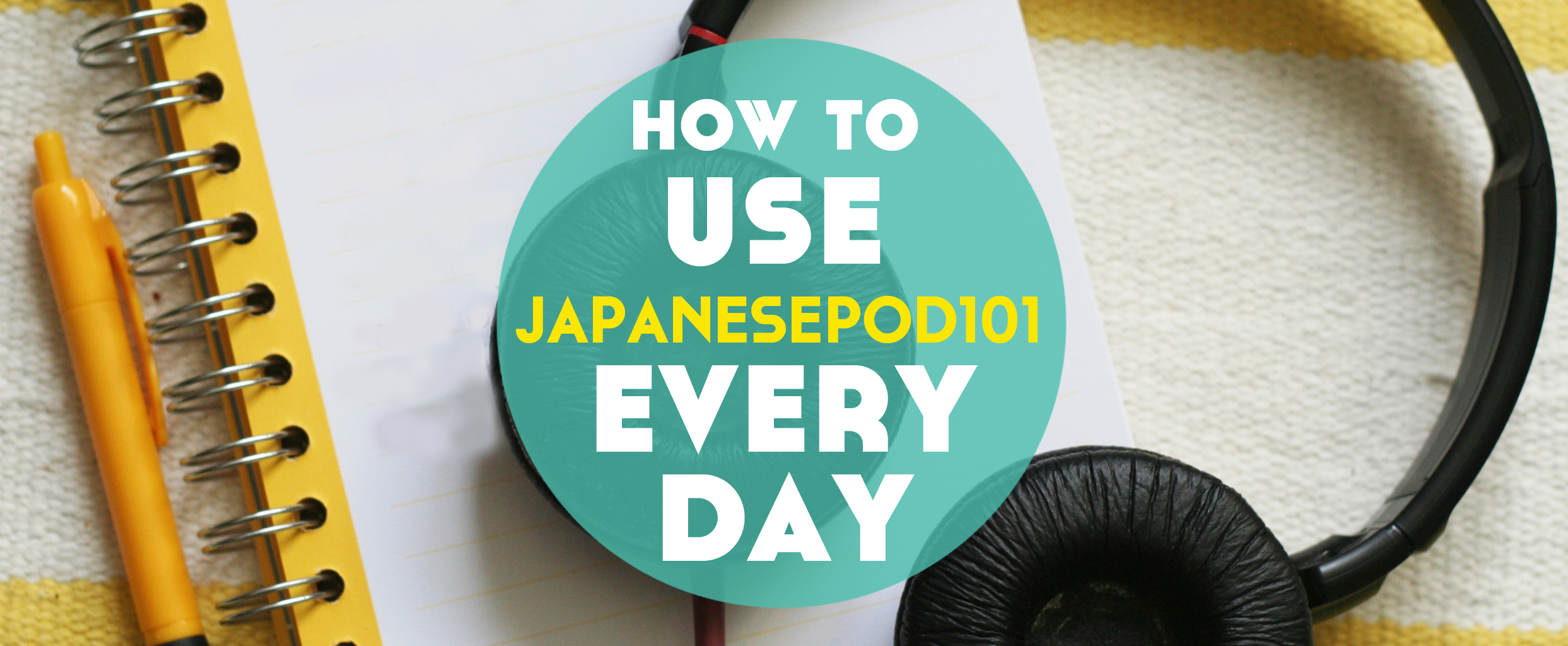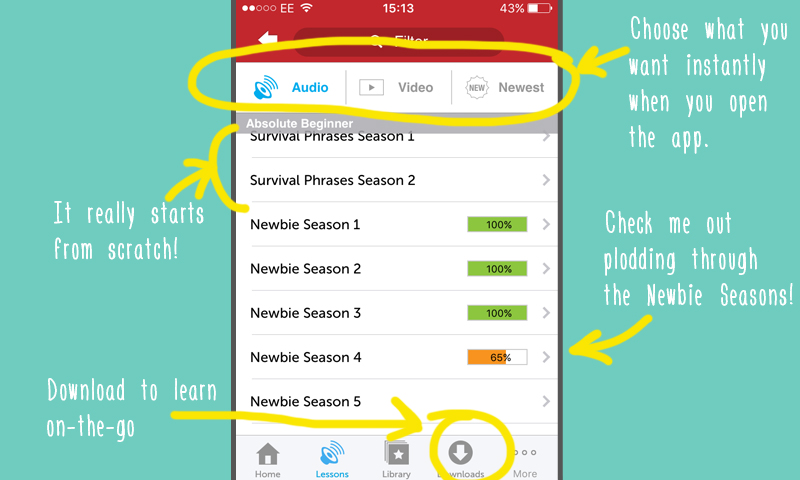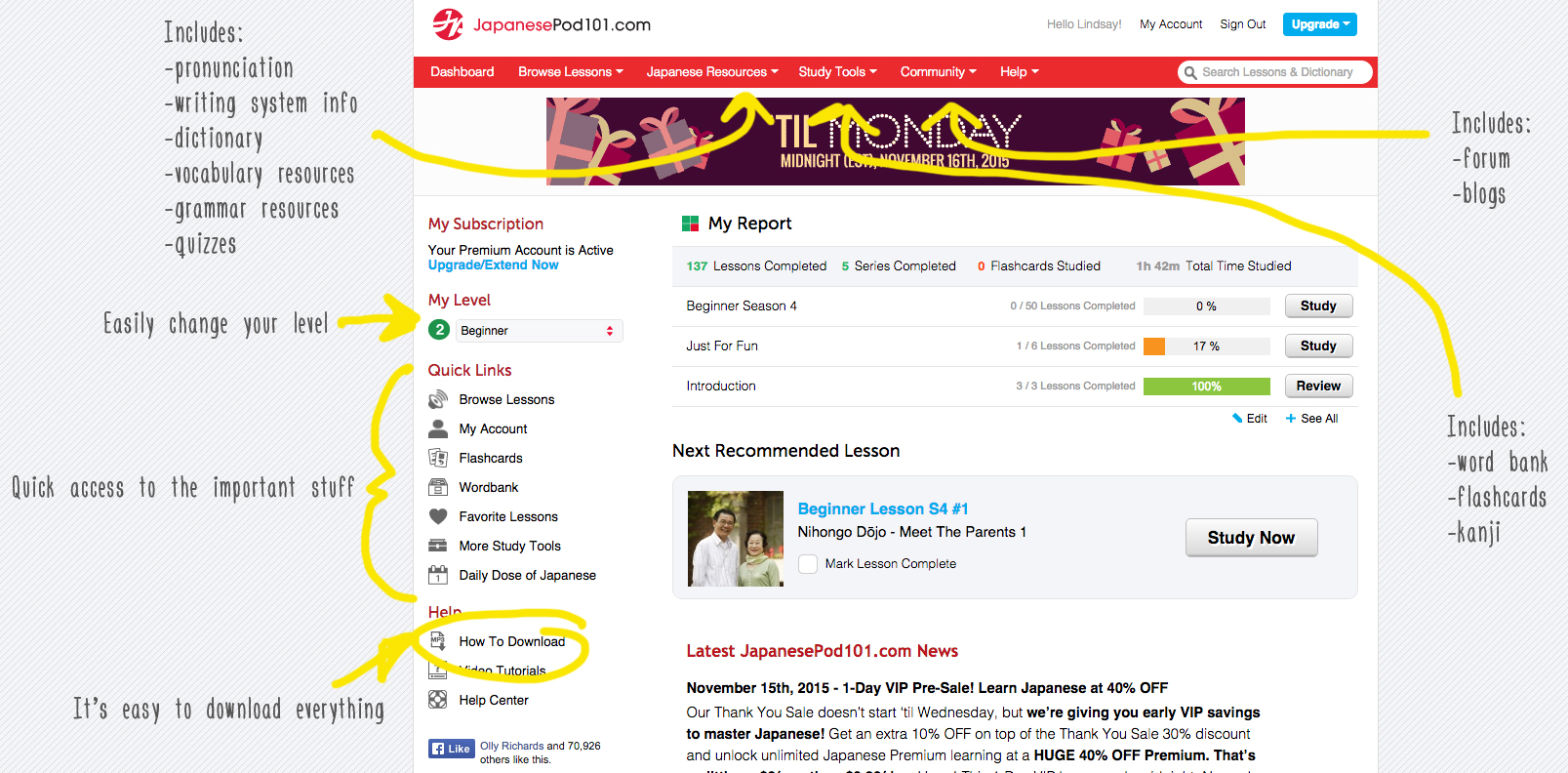December 2nd, 2015
How to Use JapanesePod 101 Every Day
If you’re a regular reader of the blog, you’ll know I’m a big fan of making the most of dead time. I’ve talked about it here, here, and here.
I feel like a flight attendant.
What is dead time exactly?
Dead time is the rather morbid term I give to time that is very easy to deem useless and beyond saving and restoring to productive time. There’s lots of it. In every day of our lives. Some of it is our fault, some of it isn’t.
I think it can be split up though. There’s genuine time that is completely devoted to doing certain things – for example, riding your bike to work. Probably not a great time to start reading chapter 4 of Cantonese in 6 Months.
But then there’s what I like to call ‘prime-time’ dead time.
Time that has to be spent doing stuff, but can also be adapted to do stuff you want to do at the same time. Win win.
My favourite prime-time dead time is washing up.
During the week, I normally wash up from breakfast, and when I do, I listen to JapanesePod101. This is my secret dead time killer I wanted to share with you. It’s not as violent as it sounds. Promise.
What is JapanesePod101?
I’ve known about the Pod101 series for years. In fact, I even mentioned them in an article about language podcasts I wrote earlier this year for The Guardian. They’re that good.
They started life as JapanesePod101 but have now expanded to include a rather mighty fine range of 31 languages, which is more than enough to satisfy any polyglot’s language appetite.
I’ll share the full list of links at the bottom of the article. If Japanese isn’t a language you’re learning right now, I’m pretty sure they’ll have something to interest you!
However, with just being subscribed to the free podcast, you don’t get the full shebang. They release only a tiny selection of the podcasts they produce – by which I mean there’s a HUGE amount of Japanese stuff waiting for you on JapanesePod101.com and the app.
You’ve got video, audio, transcripts, kanji PDF worksheets, and more for each topic.
The topics are put into well-structured units that follow different stories for each level. The stories are fun and varied and the presenters aren’t patronising or sticking to too much of a rigid, dull script, which is so often the case with audio materials.
Definitely worth checking out.
The App
This is what I use the most. And by “the most” I mean pretty much every day.
I listen to the audio from a new lesson when washing up and then take the dialogue track and Lesson Notes into my morning study hour.
The interface is clear and well divided into appropriate topics and levels. Check me out rocking my way through Newbie Season 4. Woop!
You can even download entire sessions to your phone or tablet to learn when offline. I’m thinking underground city commutes, long plane rides, and the office staff room. You’re covered.
The Website
The website compliments the app beautifully.
However, at first signing up can seem a bit…spammy? I’m not sure if that’s the right word or not.
Once you’ve created your free account, you’ll be shown a one-off screen encouraging you to join for $1 to get the Getting Started Package and a full month of Premium Membership.
You will get a lot of sales emails if you don’t opt into this. However, don’t rule the series off for that as the content is gold.
The $1 option is a really great deal as you’ll get to see everything the premium subscription has to offer – but be aware that if you don’t want to subscribe, after that month, you will need to manually unsubscribe in your account settings. Just a heads up.
Once you’re in: Woah! It’s a little overwhelming at first so take some time to have a good look around.
There’s so much to work alongside your learning with the podcast audio and video lessons that the best thing I can tell you is to experiment with what you see on the site and see what works for you.
How to use JapanesePod101 everyday
Ok, so I’ve already mentioned that I listen to JapanesePod101 everyday when I’m washing up in the morning but that’s just one way.
If you follow me on Snapchat, no doubt you’ve seen snippets from my morning routine using JapanesePod101 too. Ready for some more inspiration?
For each of the (literally) thousands of lessons you have access to with JapanesePod101, you get a mixture of audio, video, and written content.
Here are my ideas for when to fit these different aspects into your daily life.
When to listen
brushing your teeth
walking to work/school
in the car
exercising
cooking
ironing
When to watch
eating lunch
waiting in a queue
sitting in the staff room
When to write
evening – watching tv, listening to music, cooking
When to read
eating lunch
waiting in a queue
sitting in the staff room
on the train/bus
evening – watching tv, listening to music, cooking
I try and fit one lesson in each weekday and the content is so fun and varied that I’ve never got bored yet.
If there’s a day I don’t feel like “learning”, I just opt for a Culture Class or Onomatopoeia lesson instead. They’ve got you covered.
Here’s the full list of languages they offer: Afrikaans, Arabic, Bulgarian, Cantonese, Chinese, Czech, Danish, Dutch, English, Filipino, Finnish, French, German, Greek, Hebrew, Hindi, Hungarian, Indonesian, Italian, Japanese, Korean, Norwegian, Persian, Polish, Portuguese, Romanian, Russian, Spanish, Swahili, Swedish, Thai, Turkish, Urdu, Vietnamese
Sign up, have a look around, and let me know what you think.









